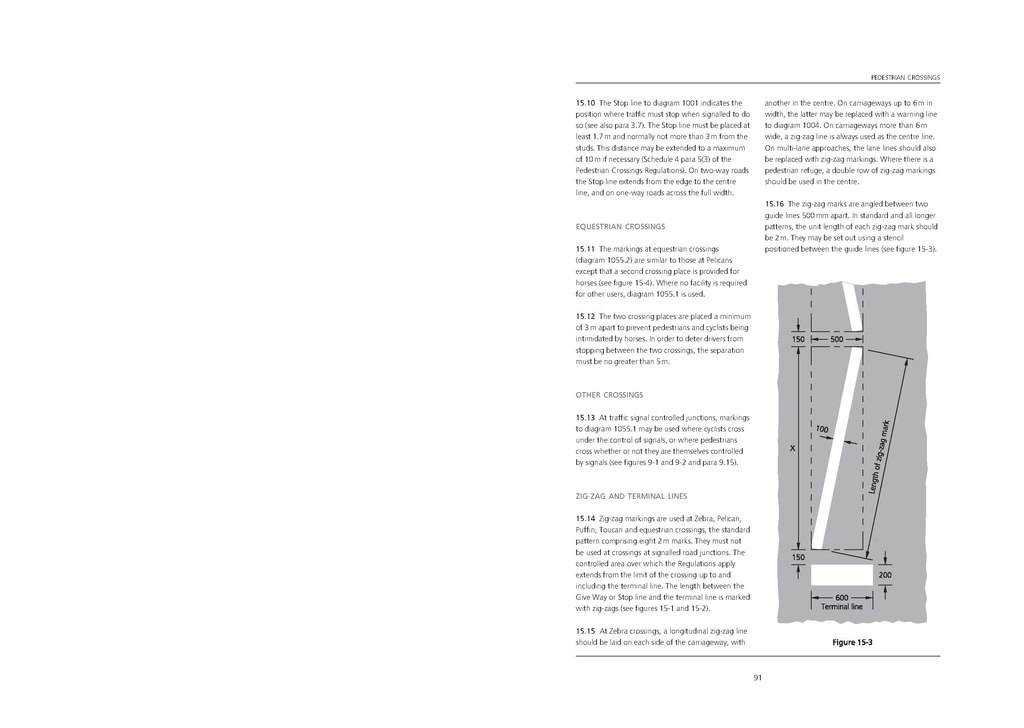15.10 The Stop line to diagram 1001 indicates the position where traffic must stop when signalled to do so (see also para 3.7). The Stop line must be placed at least 1.7 m and normally not more than 3 m from the studs. This distance may be extended to a maximum of 10 m if necessary (Schedule 4 para 5(3) of the Pedestrian Crossings Regulations). On two-way roads the Stop line extends from the edge to the centre line, and on one-way roads across the full width.
EQUESTRIAN CROSSINGS
15.11 The markings at equestrian crossings (diagram 1055.2) are similar to those at Pelicans except that a second crossing place is provided for horses (see figure 15-4). Where no facility is required for other users, diagram 1055.1 is used.
15.12 The two crossing places are placed a minimum of 3 m apart to prevent pedestrians and cyclists being intimidated by horses. In order to deter drivers from stopping between the two crossings, the separation must be no greater than 5 m.
OTHER CROSSINGS
At traffic signal controlled junctions, markings to diagram 1055.1 may be used where cyclists cross under the control of signals, or where pedestrians cross whether or not they are themselves controlled by signals (see figures 9-1 and 9-2 and para 9.15).
ZIG-ZAG AND TERMINAL LINES
Zig-zag markings are used at Zebra, Pelican, Puffin, Toucan and equestrian crossings, the standard pattern comprising eight 2 m marks. They must not be used at crossings at signalled road junctions. The controlled area over which the Regulations apply extends from the limit of the crossing up to and including the terminal line. The length between the Give Way or Stop line and the terminal line is marked with zig-zags (see figures 15-1 and 15-2).
At Zebra crossings, a longitudinal zig-zag line should be laid on each side of the carriageway, with another in the centre. On carriageways up to 6 m in width, the latter may be replaced with a warning line to diagram 1004. On carriageways more than 6 m wide, a zig-zag line is always used as the centre line. On multi-lane approaches, the lane lines should also be replaced with zig-zag markings. Where there is a pedestrian refuge, a double row of zig-zag markings should be used in the centre.
The zig-zag marks are angled between two guide lines 500 mm apart. In standard and all longer patterns, the unit length of each zig-zag mark should be 2 m. They may be set out using a stencil positioned between the guide lines (see figure 15-3).

91
